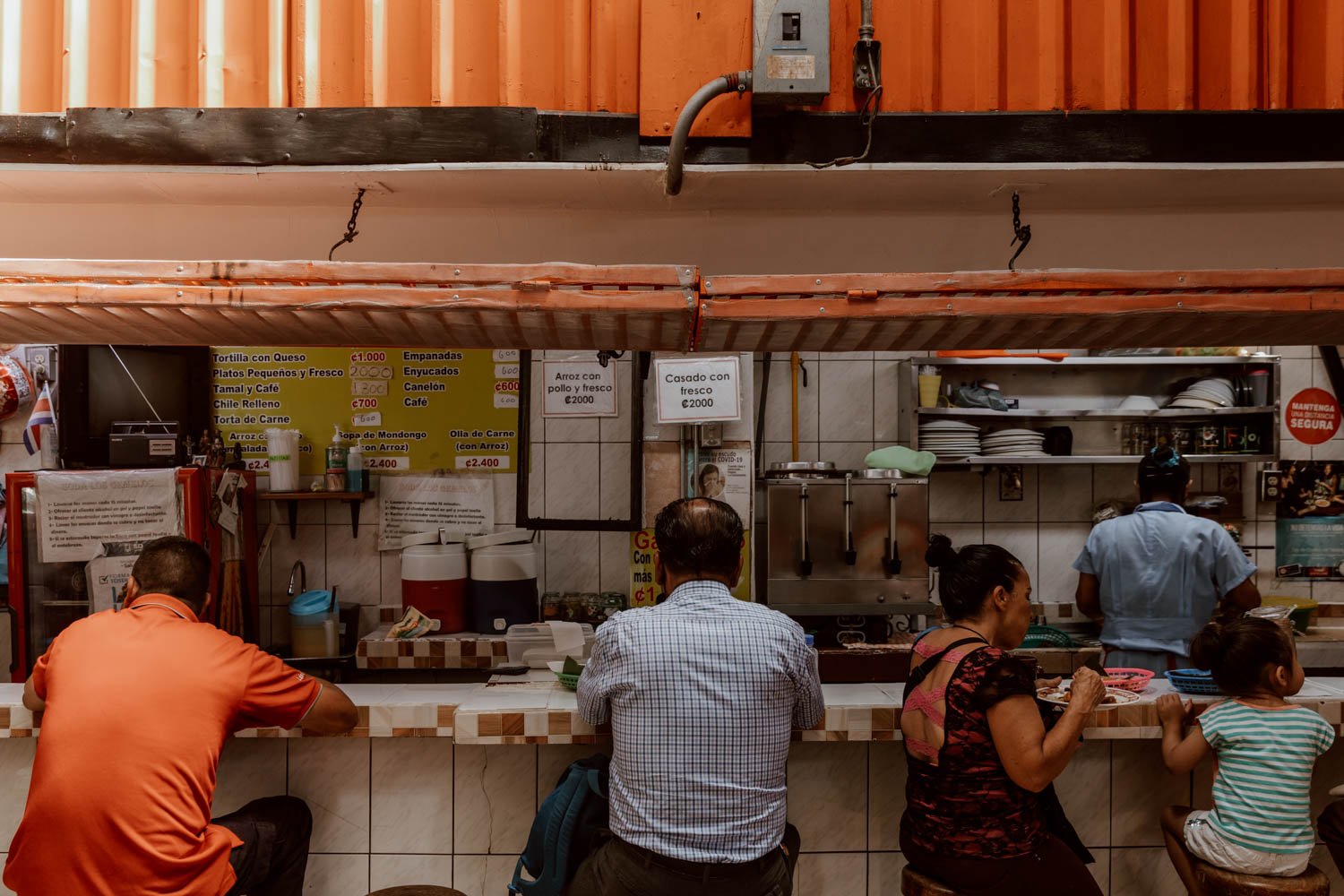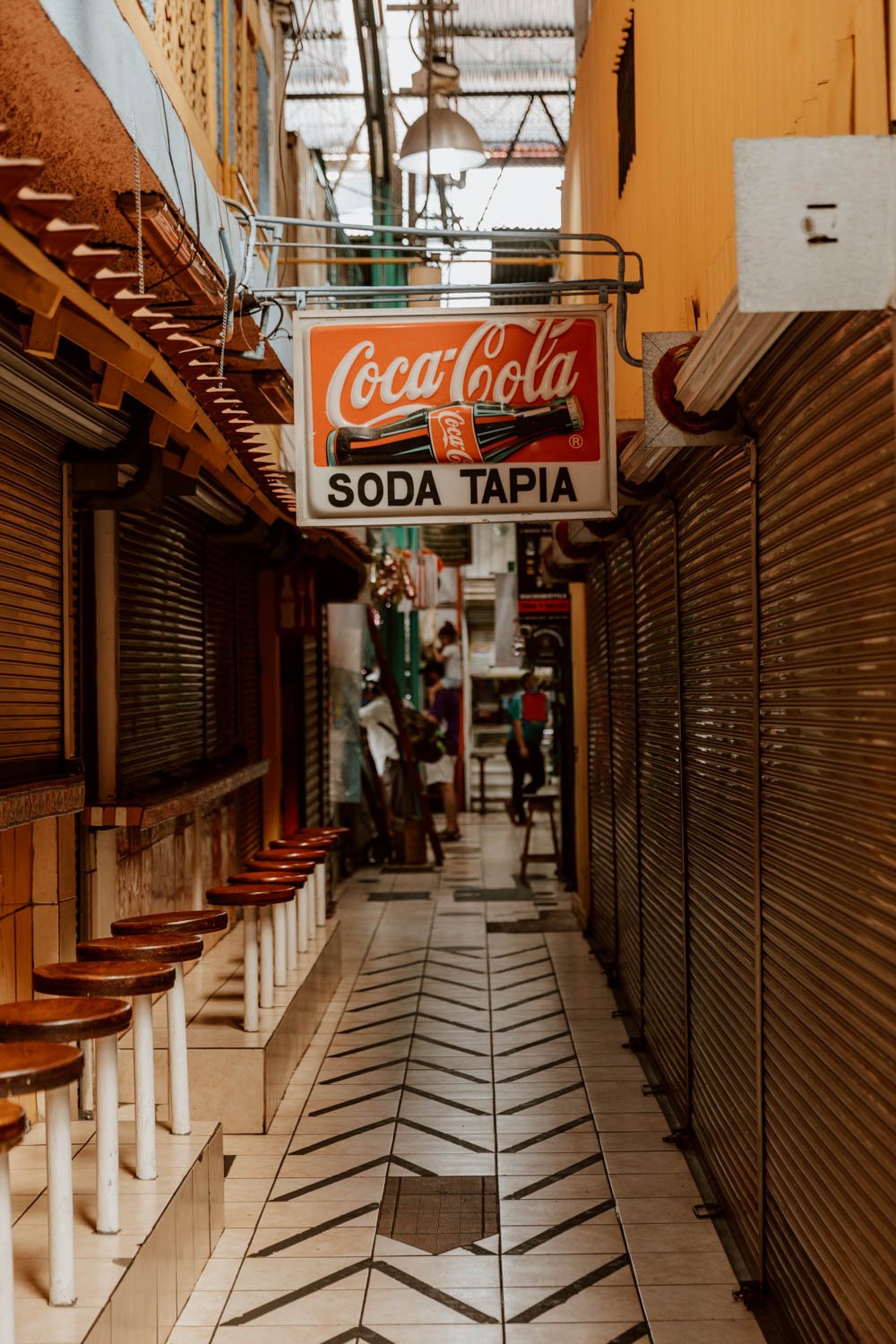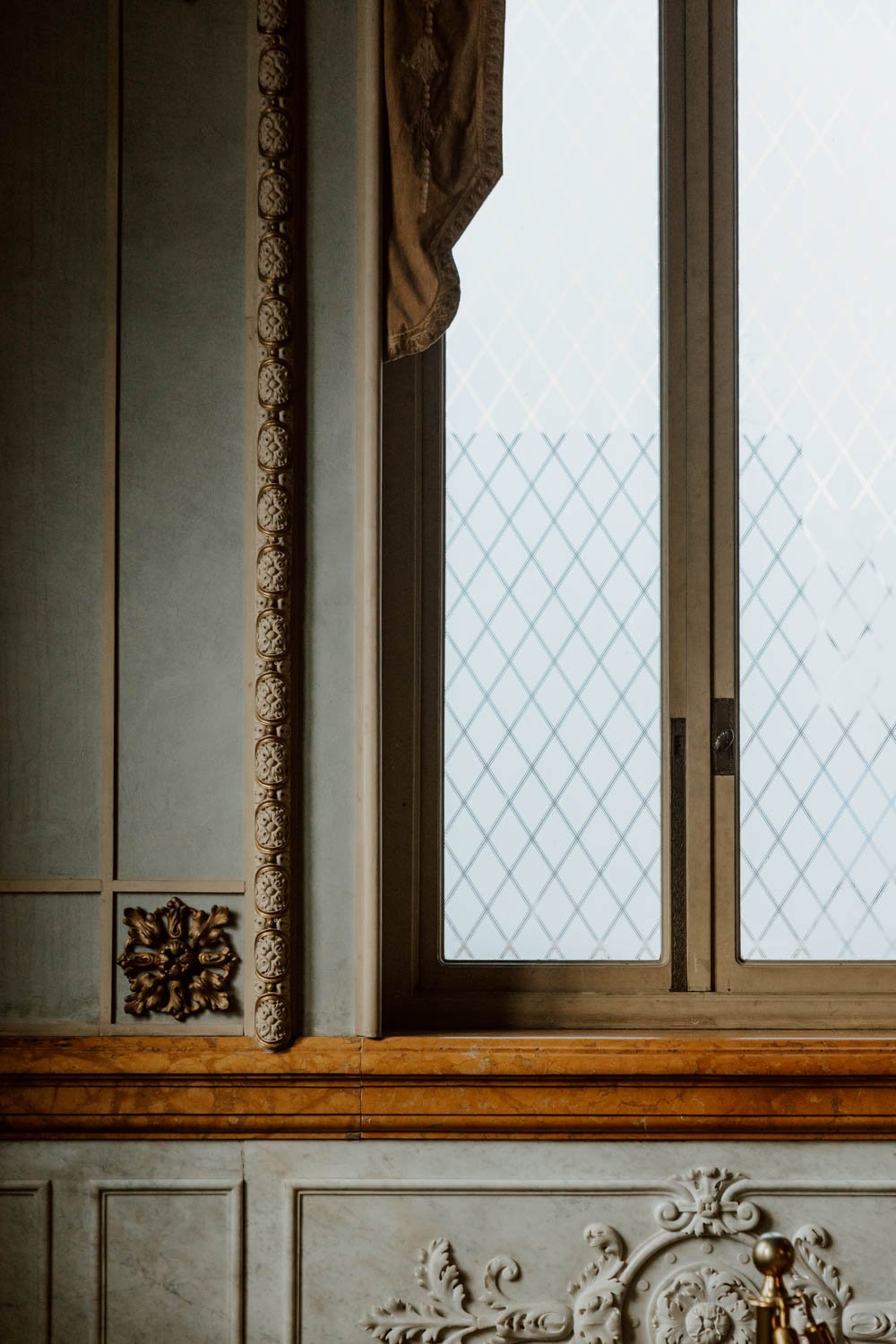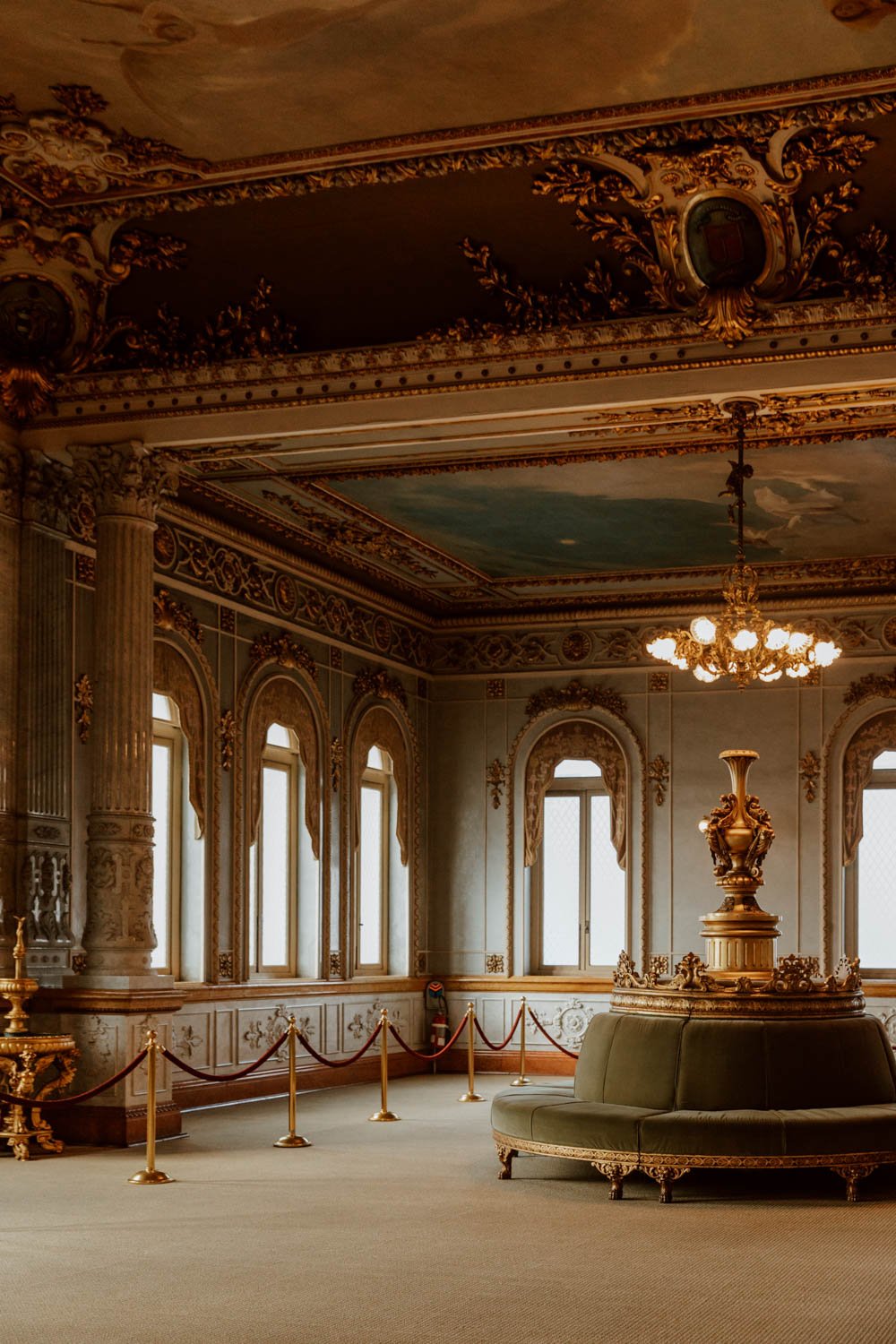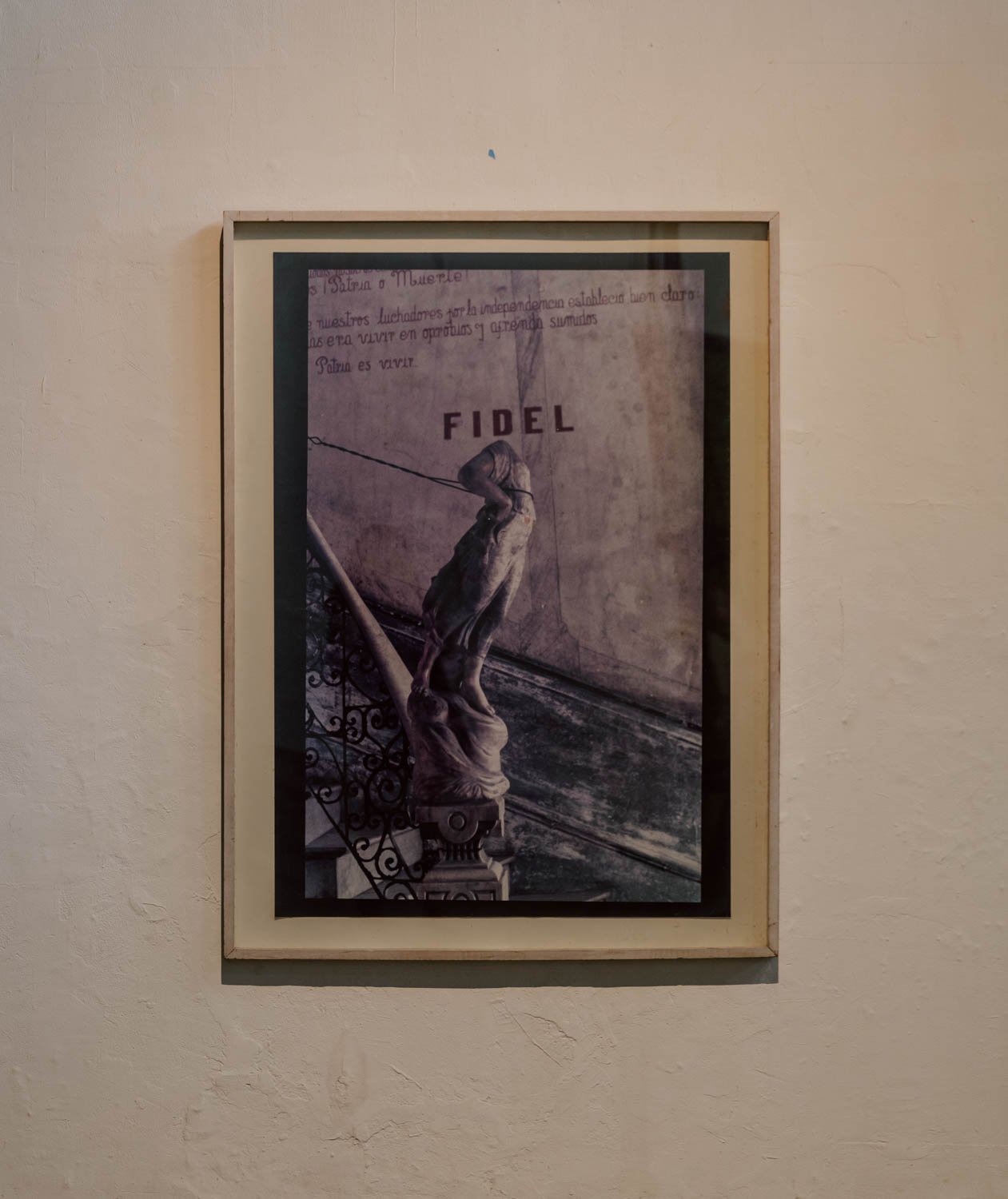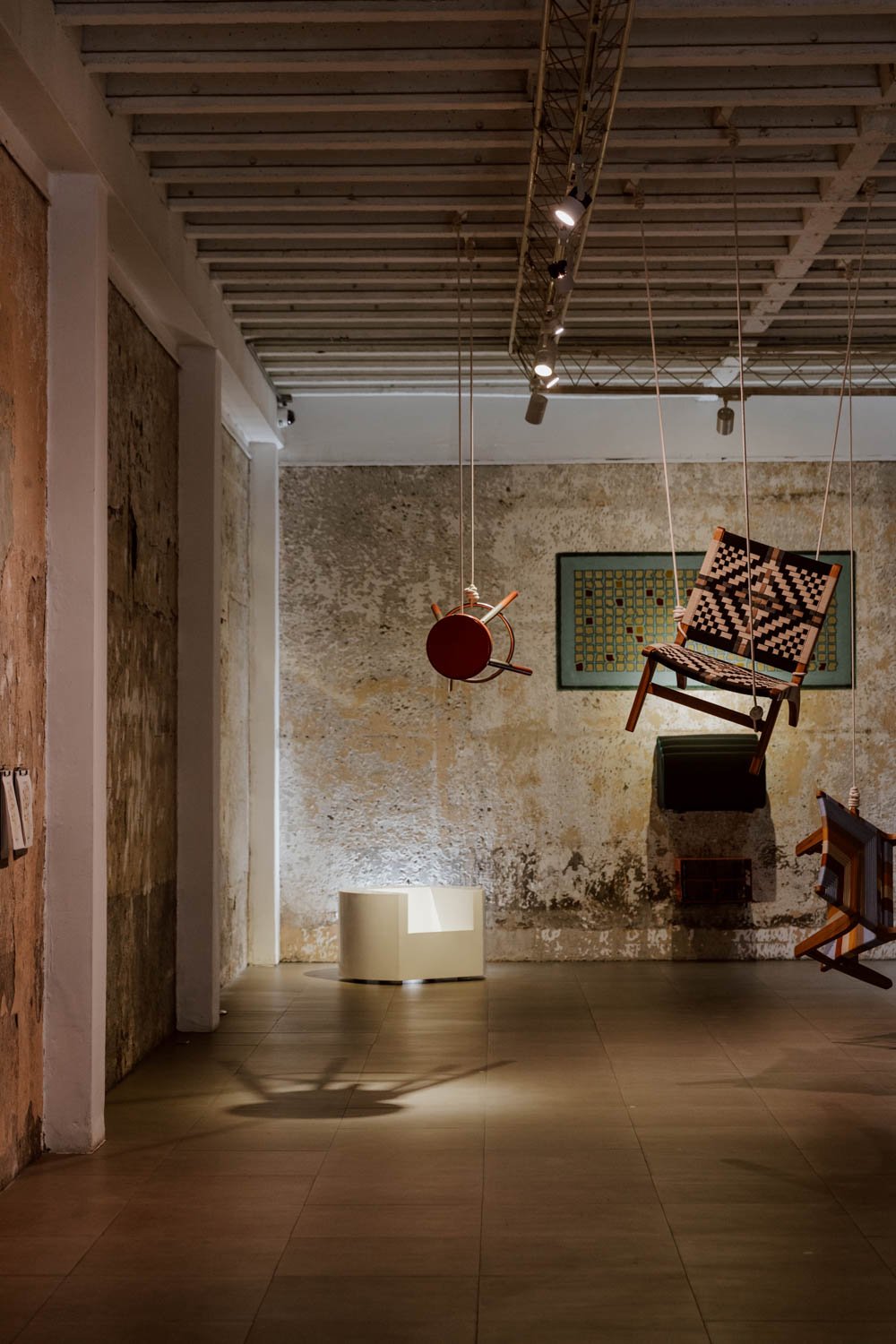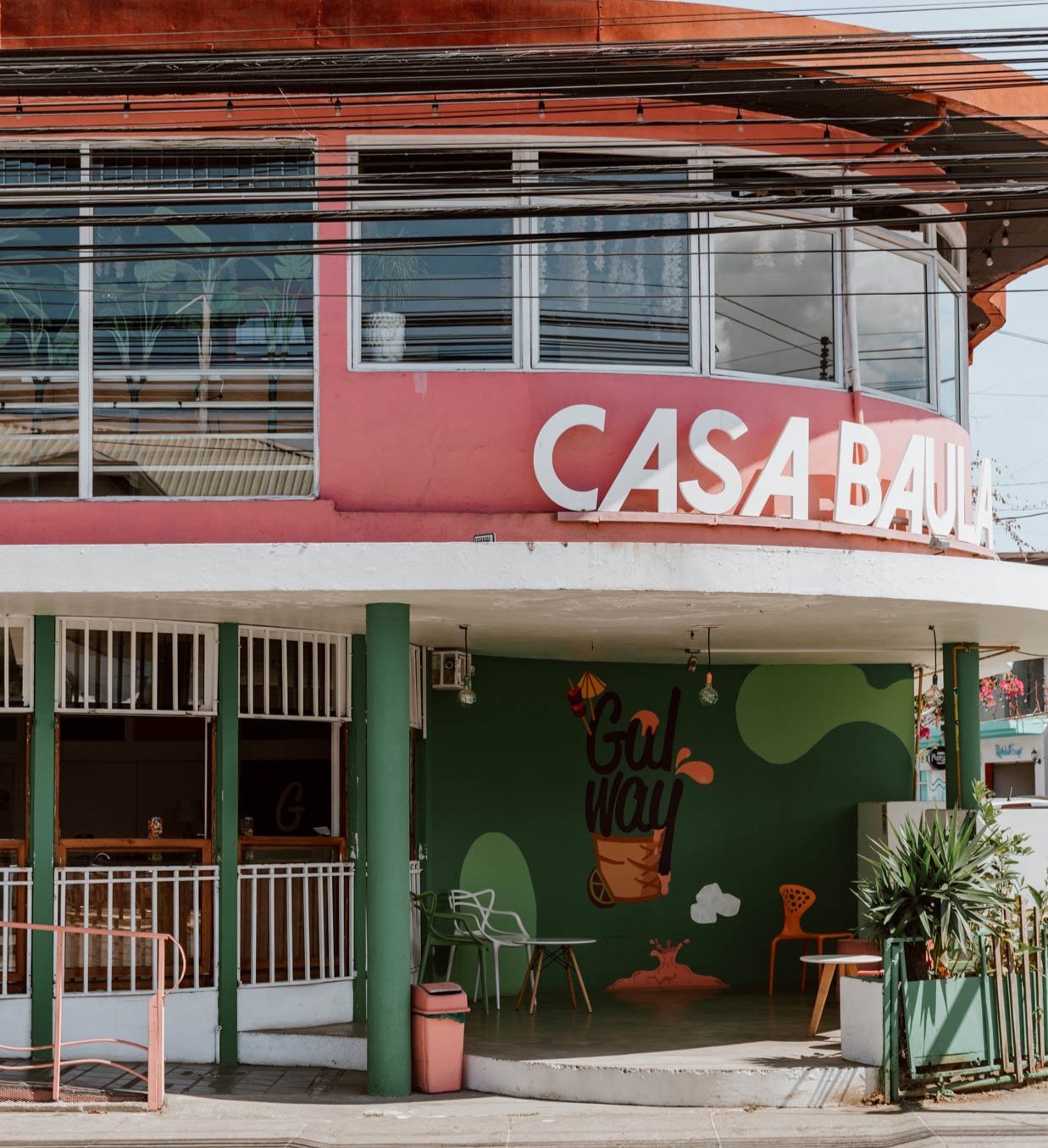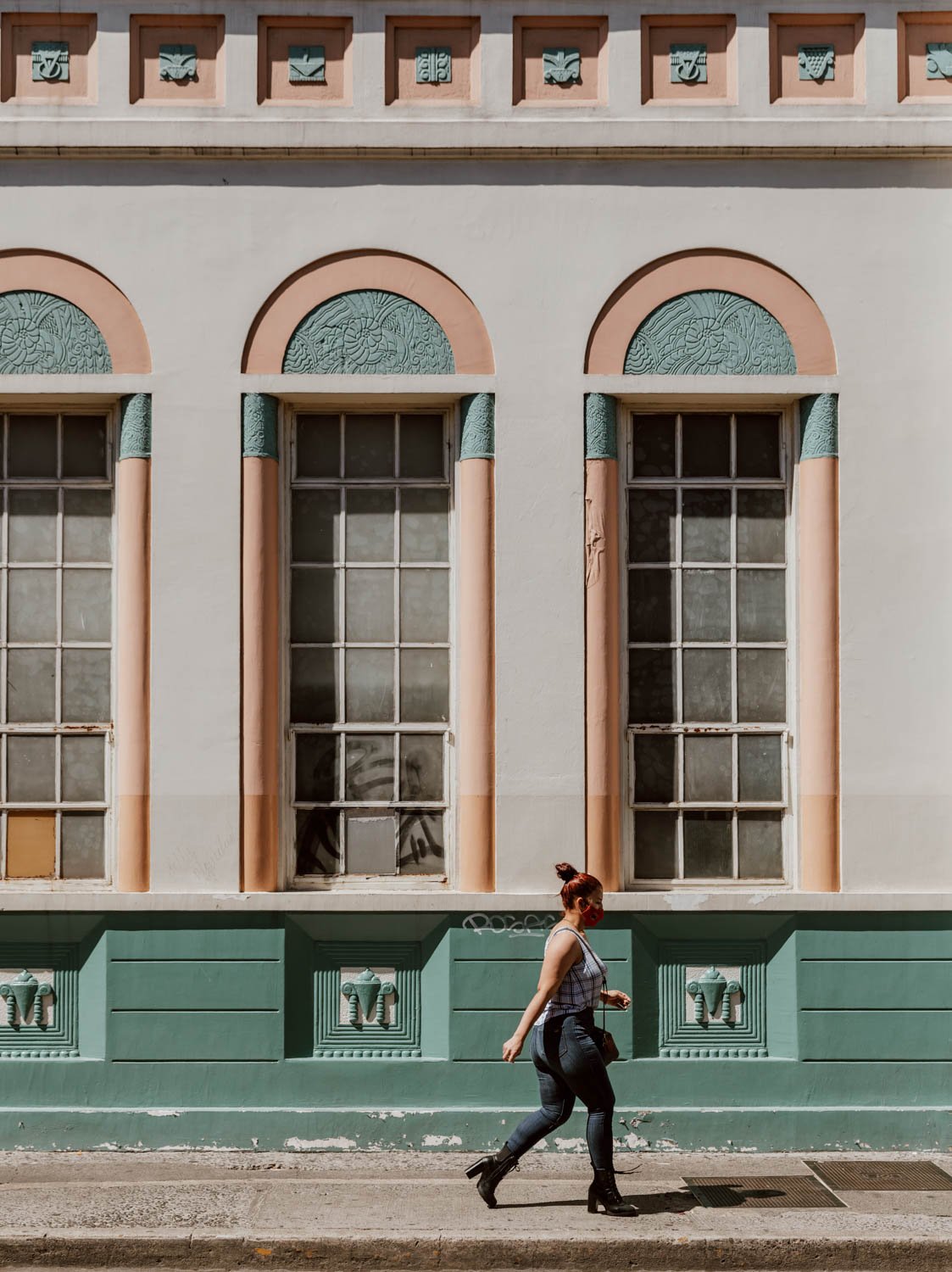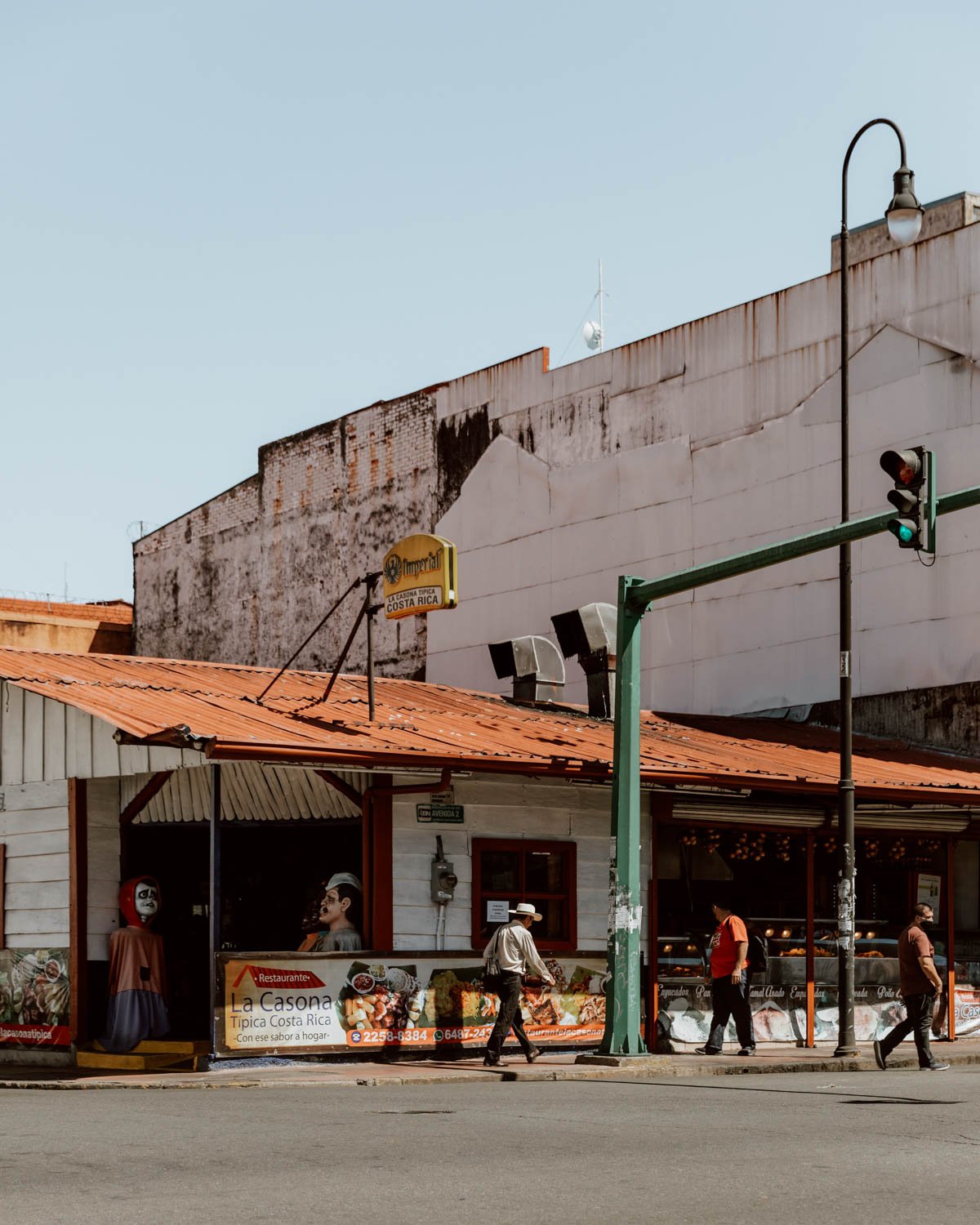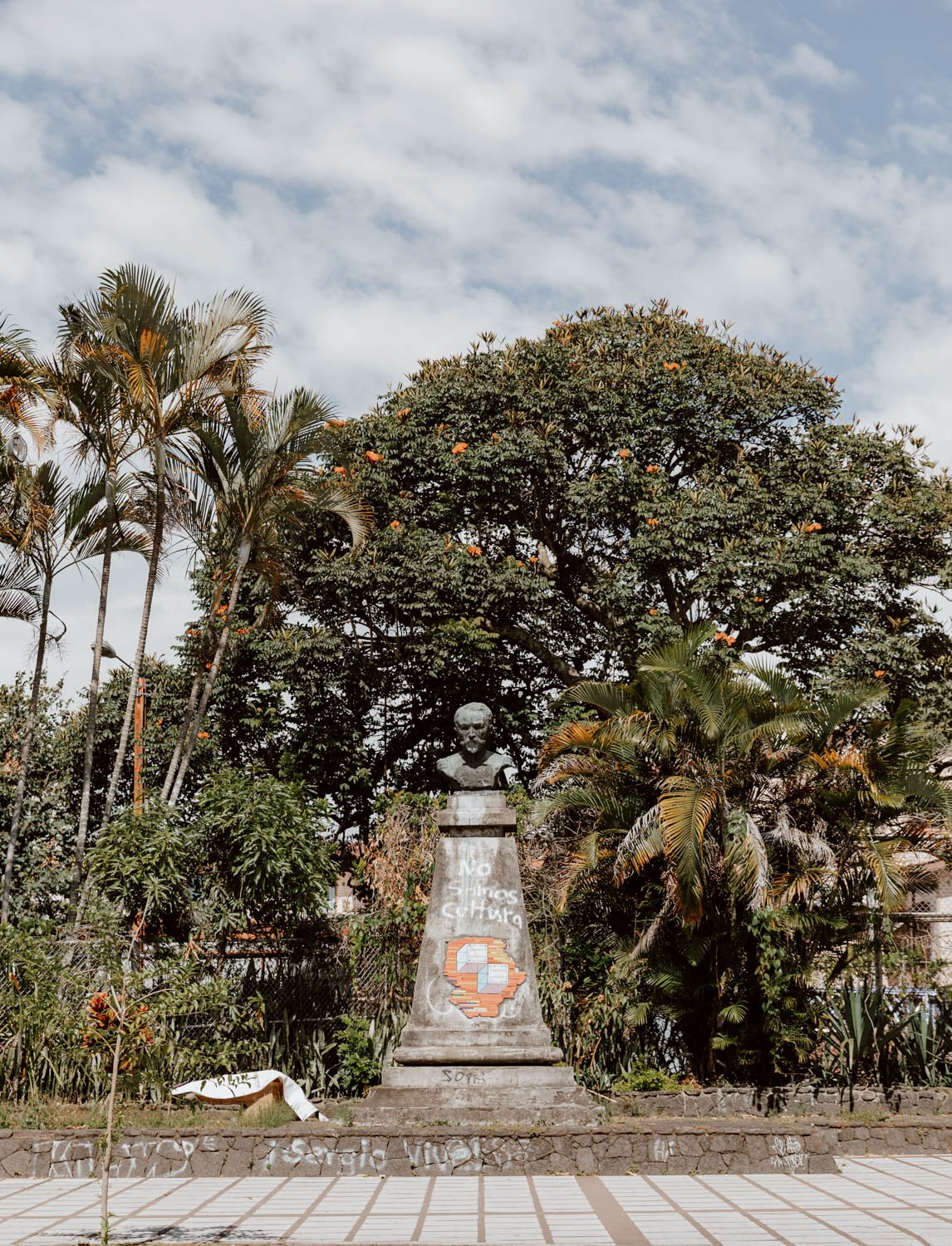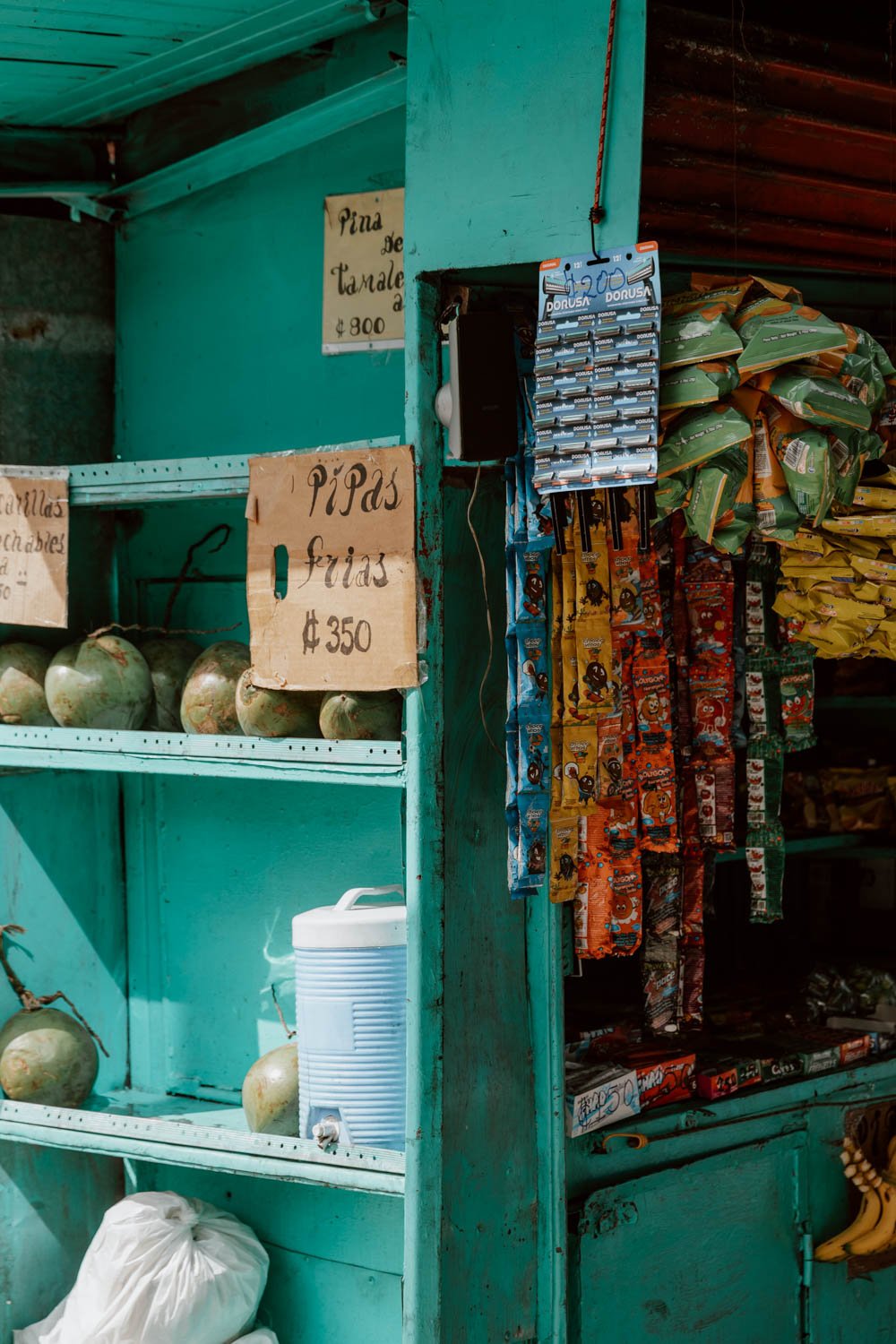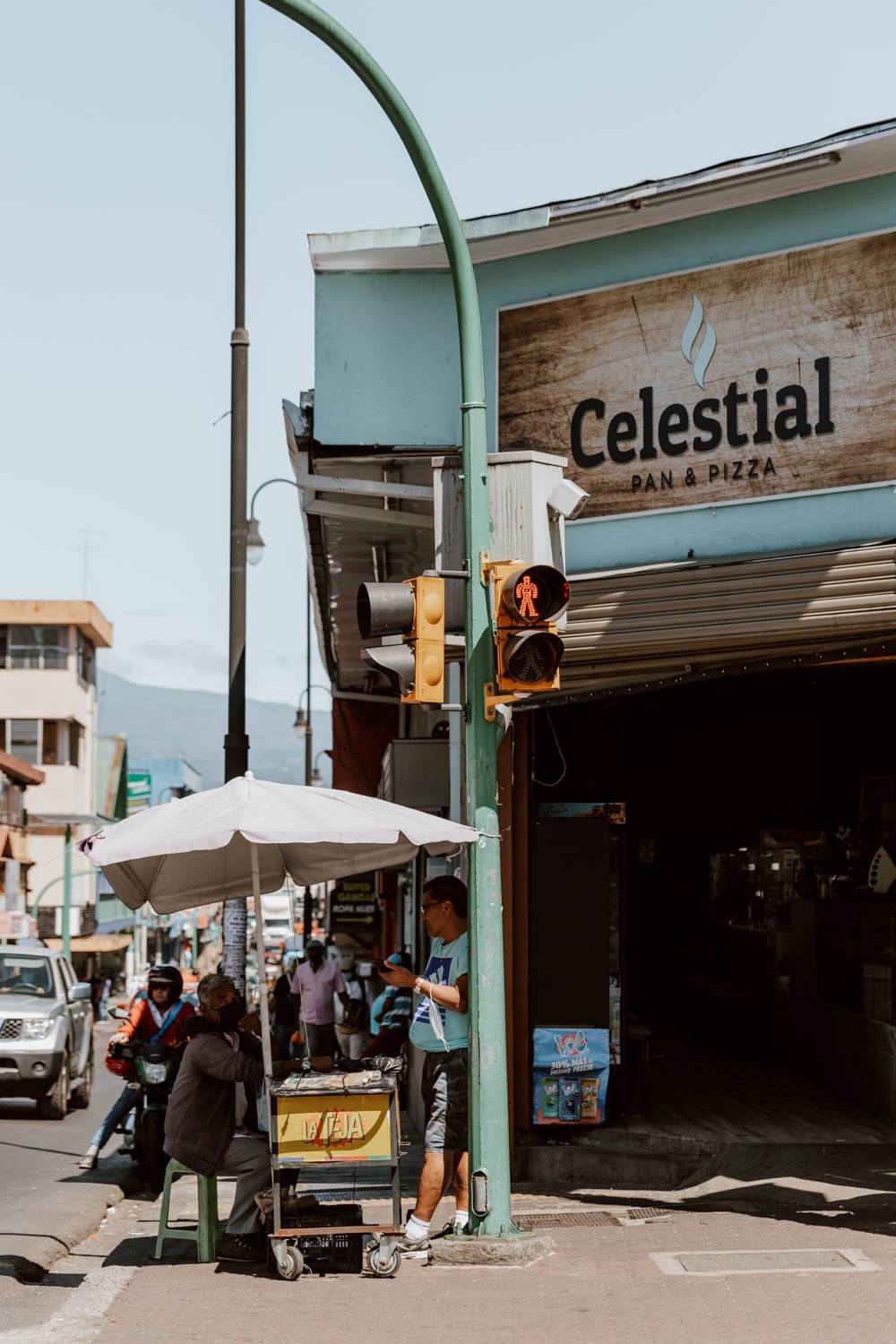Planning to visit San José in Costa Rica? Our travel guide has got you covered! Including the best things do in San Jose, our advice on where to stay, the museums you shouldn’t miss and insider tips.
Updated December 2023
Few travellers will leave Costa Rica and tell you that San José was the highlight.
In a country as blessed as this one with wildlife, protected green spaces, cloud forest, coffee plantations in the hills, and miles of paradise coastline on two oceans, the architectural mish-mash of the capital hardly stands a chance.
This is why San José is often filed away as a place to merely arrive in, pass through, or spend the night before going elsewhere or back home.
On our first budget backpacking trip in the region, we certainly shared that impression and the city didn’t really make us feel anything. Fast forward eight years, and San José was the start point for a nine-week Central America trip and, as is the case with so many travellers, a late-night arrival meant sticking around was the sensible choice.
We thought it was also the ideal opportunity for us to give San José a second chance.
From a fantastic local’s market and a treasure chest of gold, to a surprising slice of Europe and the best art gallery we’ve visited in Central America, these are the best things to do in San José, Costa Rica
p.s. As a bonus, at the end of this post, you will find our essential travel tips for San José. From how to travel to/from the airport and how to get around safely, to the best neighbourhoods to stay in, day trip ideas, bus station mistakes to avoid and the reason to bring a jumper, these are the little bits of advice you need to know before you go.
the San Jose essentials
Local / Don’t miss Mercado Central (you can even visit as part of an excellent tour)
Don’t Miss / The beautiful National Theatre
Visit / Several excellent museums but prioritise Gold Museum
Explore / The city’s highlights on a popular walking tour
Culture / We loved MADC (the contemporary art gallery)
Drink / Head to Barrio Escalante for hipster vibes
Escape / The city on this super popular full-day Arenal Volcano Mega Combo Tour
Hire / Best place to pick up your car rental - check prices and availability for your dates here.
Stay / Our hostel picks are Chillout Hostel Barrio Escalante and Capital Hostel de Ciudad but if you’re looking for a hotel with a touch of class, check out Gran Hotel.
the best Things to Do in San Jose, Costa Rica
Eat In The Mercado Central
“Food is everything we are. It's an extension of nationalist feeling, ethnic feeling, your personal history, your province, your region, your tribe, your grandma. It's inseparable from those from the get-go.”
Anthony Bourdain
Here at Along Dusty Roads, part of our travel philosophy is to visit local markets. Not just an enjoyable, authentic place to explore for all your senses, they also offer some of the best insights into a culture and interactions you could ever hope to find in a foreign land. Eating and buying there is also a small, easy way to positively spread your tourism spend.
As we explain in 23 Things To Know Before You Visit Costa Rica (published soon), the country can sometimes feel a little more ‘America’ than ‘Central America’ if you do it in a certain way, which is why we think you should make a beeline for the Mercado Central and the surrounding blocks on your first day in San Jose.
We love markets and we've been to a lot across all our travels in Latin America - and this is right up there amongst the most interesting and enjoyable.
There's ma n' pa cafes and resturants, stalls selling fresh tamales, fish and meat, vegetables, herbal cures for all manner of ailments, authentic crafts and household junk in a colourful, cramped, atmospheric building.
Wander to your heart’s content, but be sure to have at least one meal here. It's an ideal place to try your first hearty Costa Rican breakfast of gallo pinto (fried rice and beans), eggs, caramelized plantains, and dollops of hot sauce, all washed down with a fresh juice or weak instant coffee. For lunch, the options are all traditional and authentic, and you'll choose your place after being charmingly cat-called or implored by the painted ladies who run the busy little sodas (what local restaurants are called here). If unsure, go for one that's busiest with lunching locals.
We ate here a couple of times, and guaranteed it'll make your belly full and your heart sing.
The Mercado Central is also the place we first tasted picaritas caldosas, a curious and relatively under-the-radar snack of fresh ceviche served in pack of crushed crisps (trust us, it works).
Where | It makes sense to include a stop at the market on your main day of exploring the downtown area of the city, which includes several of the best things to do in San José.
You can find San José Central Market here on Google Maps.
When | Open 6am-6pm every day except Sundays. Note that the number of stalls open and activity will vary considerably at different times of day (Costa Ricans love an early start, with the local's breakfast time being closer to 6am then 9am).
Plan // If you don’t speak Spanish or would prefer to learn more as your explore, this highly-rated small-group foodie walking tour includes the Central Market, several local’s food stops and a short empanada cooking class.
Alternatively, this popular food + culture tour includes the market, a historical city walk and dinner.
Visit The National Theatre of Costa Rica
From an unmistakably Central American setting to one which feels of another age and another continent.
The National Theatre, sourced from taxing coffee exports and imports of pretty much anything, was created in 1897 at the behest of José Joaquín Rodríguez Zeledón, the President of Costa Rica.
Eager for the small nation to have a prestige landmark, this meant an Italian creation of shipped over marble, frescoes painted in Milan, and a theatre building unmistakably European in its design and architecture.
One of the finest historic buildings in San José's higgeldy-piggeldy architectural mish-mash, the Renaissance and Baroque interiors are decadent and ornate, and the inspiration drawn from the Palais Garnier opera house is evident. However, it's the ingenious raise-able stage which transforms the performance space, and the little touches of Costa Rica amongst the lavish European facsimile. The ceiling paintings are by a Milanese artist who never set foot in the country (everything was literally shipped over piece by piece), and offer an idealistic representation of bucolic scenes of coffee, bananas, and people - foundations of the the Costa Rican economy and largely responsible for funding the theatre's creation - but there are several errors in them.
It can only be visited as part of a guided tour by the Theatre staff, and we think this is an unmissable place to see in San José. The setting and splendour is something to marvel at - one a par with several famous theatres we've visited in Italy itself - but it also serves as an accessible insight on historic legacies and economic interactions between Central America and Europe in the colonial and post-colonial era.
Where | In central downtown San José, by the Plaza de la Cultura, find it here on Google Maps.
When | English and Spanish-speaking guided tours are offered every hour from 9am to 4pm (the last tour of the day), seven days a week. Ours lasted an hour.
Frustratingly, It's not possible to buy your ticket in advance or book a specific tour slot which means you have to just turn up and hope the next tour group slot isn’t oversubscribed (to improve your chances, we recommend you turn up about 10 minutes before the hour).
Tickets | The cost of the ticket, including the guided tour, is ¢3.500 for foreign visitors but children under the age of 12 can join for free. Entry without the guided tour is not permitted.
They may combine the English and Spanish tours if there are lots of people waiting.
Insider Tip // The venue is still very much active and at the centre of cultural performances and events in the capital. If time permits and you'd like to do something totally different in San José, you could scrap the tour and go to a show instead (tickets + schedules are on the official website).
Although we highly recommend doing the guided tour, you can also simply go into the main entrance hall of the theatre and have a drink or lunch at Alma de Cafe. A wood-panelled room reminiscent of Parisian or Viennese coffee houses, it's a relatively fancy option but unique in the city.
Contemporary Art at MADC
The rest of your trip in Costa Rica will likely involve so many amazing activities in nature - whale-watching in Uvita, enjoying the beautiful beaches of Manual Antonio National Park, or ziplining in Monteverde - that we feel San José should be the place to give time to other facets of the country's culture and story.
The Museo de Arte y Diseño Contemporáneo is the best place for this, and we think it should feature on so many more traveller itineraries and posts on the best things to do in San José.
Set within an old alcohol factory, the MADC is a gallery with the ambition to democratise private art collections and open them up to the public, as well as promote contemporary Central American artists. The main space is very much a white cube, with mixed techniques and mediums championed across the permanent and temoporary exhbits (including video, sculpture, large-scale installations). There's also an outside exhibition space, used for performances and installations.
Galleries of this quality, scale, and purpose aren't that common in Central America, and several of the works we saw in the permanent exhibition were incredibly powerful at sharing alternative perspectives on the region's politics, past, and present.
When | The gallery is open 10am - 4.55pm, Tuesday to Saturday. We recommend 45 minutes to an hour for the gallery itself.
Visit the MADC website for latest information on openings and exhibits.
Tickets | Entry is $4 USD for non-residents, but foreign students with an ID card can get in for $2. Children under 5 are free (but we say some discretion might be required for certain exhibits).
Simply turn up and purchase your tickets at the front desk, and we highly recommend arriving with small change to pay this, instead of large notes or card.
Where | A 10-15 minute walk from central downtown, the gallery is by the National Library and opposite a large park. Find it here on Google Maps.
The parallel street (Calle 7) is a cultural / creative hub with a few little, quirky shops, bars and cafes. Café Otoya (maps) and Café Miel Garage (maps) are popular with travellers, whilst Andrew bought a fabulous locally-made shirt from the guys at Gryllo Otoya.
The popular Selina Hostel San José is also just round the corner.
Hang Out In Barrio Escalante
The layout of the capital is quite important to get your head round before booking accommodation or finalising your plans. We explain this in more detail, plus share recommendations on the best accommodation options, in the bonus ‘Things To Know Before Visiting San José’ section at the end of the post.
For short visits at the start of your Costa Rica adventure, we don't think you should really prioritise Barrio Escalante into your plans unless you're planning to eat, drink, or stay at a place there; the downtown area's pace and energy will be more what you're looking for. However, for longer stays, digital nomads OR those of you who’ve been travelling in Central America for while, it will be a great place to base yourself to refresh and recharge your batteries.
By the old rail tracks, this is sort of the fancy-hipster neighbourhood of the city, with lots of modern coffee shops, ex-pat hangouts, western-ish food joints, and quirky stores. The foodie and nightlife hub of the city, it brought to mind parts of Quito and Lima, but we were actually a little underwhelmed by it; there was a slightly sterile, cookie-cutter approach and not the atmosphere we were hoping for (though this could of course have just been the wrong time on the wrong day). If we were based in San José though, it would probably be an area we'd cherish and visit a lot.
New places are opening up all the time, and there lots of little food huts, but Calle 33 (street 33) has been nicknamed the 'paseo gastronómico' given the number of options, and is a good place to start. A few of our picks for the barrio include: Cafeoteca for coffee, Apotecario for cocktails, WilkCR and Costa Rica Beer Factory for artisinal beers, and the food truck shipping containers at Jardín de Lolita (maps).
Where | In the east of the city by Parque Francia and the old railway station, it’s a short walk from the hospital area but if you’re not based nearby, you should take an Uber there/back. Find it here on Google Maps.
When | During the day is good for laptop days, but it's best to go here for dinner, drinks, and socialising.
Stay | There are a few very popular hostels in and around the area, as well as an excellent secection of Airbnbs.
Top hostel picks include: Chillout Hostel Barrio Escalante
Top Airbnb picks include: this two-bedroom upscale apartment, this small but excellent value studio, this gorgeous industrial-chic two bedroom apartment and this stylish, bright and colourful apartment.
Top hotel pick: Luz de Luna Boutique Hotel
A Walk Along Avenida Central
As the name would suggest, Avenida Central runs through the middle of San José, and is pretty central to most goings-on in the city.
The full stretch is 3km long, but it's the pedestrianised downtown part which is the most curious and atmospheric to wander along. It's the main shopping area, but the attraction here is the music from groups of pensioners playing marimbas and guitars at each crossing, the chorus of calls from street sellers offering up avocados, bananas, underwear or phone covers, and the general hub-bub and noise which is a quintissenal part of the CEntral American soundtrack.
By the central market, all of this activity and noise gets turned up to 11 (quite literally) with men on crackling speakers running down the deals of the day, lottery tickets on sale, and women bellowing out their fruit + veg deals over the cacophony.
If you’d prefer to pair your wandering with a bit more structure,context, and history - or would prefer to be in a group setting on your first few days in Central America - then consider this highly-rated walking tour of San José.
Alternatively, if you don’t fancy covering the city purely on foot, this excellent tour covers the city highlights by bus with less walking.
Plan // We've shared lots more practical advice to help you travel better in San José at the end of this post. From the best time to visit and getting your head around the layout, to knowing which neighbourhood to stay in, how to get around, where to make your onward transport connections, and the reason why you need to pack a jumper.
Jade, Gold, Or History: Pick One National Museum
We think it's important to curate our guides to what we'd actually want to do when we travel - and what we actually did in San José across our two visits - rather than just an overly stretched out, unrealistic, and unappealing list of 33 'amazing' things to do in San José.
And so, we don't expect all of you to visit three of the city's most well-known museums. Firstly, it's going to be unaffordable for budget backpackers due to the very 'Costa Rican' entry prices; for others, you'll enjoy your visit more by putting your time and budget elsewhere; and for the rest you likely won't have the time or inclination to visit three museums like these across one or two days.
At time of writing, there is no museum pass or 'combined ticket' available for San José museums, and we suggest you prioritise the Gold Museum. If time and budget permits, or you would like to learn more about Costa Rican history, then the National Museum should be next on your list.
The Pre-Colombian Gold Museum | The most likely option, and one of the most popular things to do in San José for tourists. Owned and curated by the national bank, the underground Museo del Oro Precolombino house a vast array of jewllery, figurines, sculpted warriors dating frmo 400 BC to 1550 AD. To see this amount of pure gold shining in one place is a delight, but through the role and story of the precious metal, the museum educates on and champions the culture and craft of indigenous civiliisations prior to the onset of European conquest and colonialism.
As important and impressive as the collection is, it is a tad expensive to get in at $16 USD. If you've been to similar museums in Bogotá, Colombia, and in Lima, Peru, you may not get as much out of it as a first-time visitor.
Where + When | In the centre of the city by Plaza de la Cultura and the National Theatre,
Find it here on Google Maps. The Gold Museum is open from 9.15am - 4.30pm, seven days a week (it does however have shorter hours and close on various national holidays - find more information on their website.
Tickets | For foreign adults, it's $16 / ¢10,800 colones or $12 / ¢8,160 colones for students. You can buy in advance on their website here, but note there is a small additional charge. Alternatively, you can buy on site when you visit or purchase this skip-the-line ticket.
The other two national museums in San José are:
The National Museum of Costa Rica | Just round the corner in a yellow castle (we told you San José's architectural styles were all over the place), this traditional and informative museum tells the story of Costa Rica across a large, diverse number of objects, artefacts, and exhibits. There's also a butterfly garden at the entrance, which may sweeten the deal for you.
Open 8.30am-4.30pm Tuesday to Saturday, 9am to 4.30pm on Sundays and closed Mondays, find it here on Google Maps. It's $11 USD for foreign adults, $6 for foreign students, and free for under-12s. You can get full visitor information on their website.
p.s. The quirky building is actually a former military barracks, where you can still spy bullet holes from the 1948 civil war (and, as the country's military was abolished in 1949, barracks were no longer required!)
The Jade Museum | Housed in a Bond villain-esque windowless modern structure, exhibits focus on the semi-precious stone which played an important role in pre-Colombian art and society. With over 7,000 pieces, if you've ever dreamed of visiting world's largest collection of jade, then this is the place to finally make it a reality…
Open 8am -5pm, seven days a week, you can find the Museo del Jade here on Google Maps. It's $16 USD for foreign adults, but you can get 2-for-1 entry on Sundays. Find full visitor information on their website.
Essential Travel Tips for San José, Costa Rica
Bring A Jumper
The city is at quite a high altitude (1,172 m above sea level), and can be chillier that you may expect in the early mornings and evenings during dry season. It's a good idea to head out with a layer for the evenings.
The Best Time To Visit San José
In comparison to places like Monteverde and the two coasts of Costa Rica, your enjoyment and experience of San José isn't so tied to the weather. Indeed, your Costa Rica itinerary should be entirely based around the stark seasonal difference between the Pacific and Atlantic coasts, rather than what's going on in the capital.
The rainiest months in San José are May to October though, with the best months to visit falling from December to March/April.
The Airport Is A Bus or Taxi Ride Away
Juan Santamaría International Airport (SJO), also known as San José Airport, is the main international airport and likely entry point for most Costa Rica adventures.
It's a 30-minute / 20 km car journey to the city centre, and you can find official taxi drivers waiting in the small area as you exit the arrivals terminal. They all have orange Taxi Aeropuerto vehicles which are conveniently parked right by the terminal. Once you exit the small area, it's only unofficial drivers who will approach and they will be parked elsewhere (i.e. in the car park across the road or further).
We recommend finding a driver before you exit, and we paid 19,705 colones / $33 USD for a private taxi, on the meter, to the Lost In Costa Rica hostel in the east of the city.
Alternatively, you can book and pre-pay for a door-to-door transfer from the airport to your hotel here.
There is also a regular bus from the airport to downtown San José for a $1, and the stop is on the other side of the car park. For after dark or late evening arrivals, it's best to take a taxi straight to your accommodation.
How Long Do You Need in San Jose?
For two-week Costa Rica trips, we know that a city like San José may not be top of your list. However, as flight connections in/out are likely to be from here and it's a transit hub for pretty much everywhere else in the country, you may find that spending a night in and around San José makes logistical sense.
As we mentioned, the city is good base for a first night - especially if arriving late - in order to get your phone sorted, source colones or USD, and get over jet lag.
Across our two visits, we stayed two nights each time for several reasons, but we think that a one full day and one night is a realistic and good amount of time to sample some of the best things to do in San José, and ease yourself gently into your Costa Rica travels.
Importantly, if you are flying into San José Airport in the evening and planning doing a Costa Rica road trip with a rental car, then you may find that it’s more convenient to skip the city entirely. If this is your scenario, your most convenient option is to stay in one of the many hotels in the Alajuela neighbourhood by the airport, rather than go all the way into the city, and then go back in the morning to pick up your rental car.
The majority of hotels in Alajuela offer free guest shuttles to/from the airport, so it’s a no-brainer; if you’ve got an early morning onward flight from San José airport, this is also what we recommend doing.
We did this for our flight home, and can recommend the Holiday Inn Express (La Sabana) as a decent option.
Travel Tip // If you’re hoping to rent a car in Costa Rica, a really good place to start is via an aggregator like Rentalcars.com or AutoEurope, both of which we’ve used for lots of road trips on our travels.
There's No Single San José Bus Station
It's common in Central America for bus stations to be linked to the private companies or direction of travel, meaning there's usually not one single transport hub.
This is the case in Costa Rica, so don't just search for 'San José bus station' when trying to plan your onward connections. Instead, you need to find the correct one for your final destination!
For travellers, the most likely options will be the large Bus Terminal 7-10 (maps) for journeys to La Fortuna, Tamarindo, Santa Terese and Jacó; the Pulmitan station (maps) for Liberia; and the Tracopa bus station for Quepos (for Manuel Antonio National Park), Uvita, and Drake Bay connections.
For more details on the Tracopa station and routes, read How To Get From San José to Uvita By Bus.
We recommend confirming the right station the night before travel so you can plan your route with plenty time.
Stay In The Right Neighbourhood For You
When researching where to stay in San José, most hostel, hotel and Airbnb options will be in quite distinct areas to the west and east of downtown.
From several of the best and most popular hostels in San José, you're going to be a 15-25-minute walk from the city centre, meaning a taxi or Uber may be essential at night.
Hospital District | West of downtown, about a 20-minute walk to the centre. Stray Cat Hostel is the pick of the bunch, whilst Capital Hostel de Ciudad is an excellent hostel but the location is quite a bit further out.
Our hotel pick for this area is the charming Hotel Grano de Oro.
Central / Downtown | Selina San José is the most popular hostel in the city, and it's got a really good location in the historic Barrio Otoya with several cafes and bars nearby, as well as MADC. The closest to downtown, you're a 10-minute walk to the centre or to Barrio Escalante.
For those that would prefer a hotel, Gran Hotel Costa Rica is a wonderful and luxurious property, whereas Sleep Inn Hotel Paseo Las Damas is highly-rated but more affordably priced.
East | The hip area of Barrio Escalante has an increasing number of excellent hostels and Airbnbs, and is the best spot if you're looking for a base with good food, drink + digital nomad spots on your doorstep.
We’ve covered our picks for Barrio Escalante above, but if you’re looking for a quick hostel recommendation, check out Chillout Hostel Barrio Escalante.
With regards to hotels, you won’t actually find a huge number in this part of the city; Luz de Luna Boutique Hotel is the best option.
We stayed twice in the popular and good-value Lost In Costa Rica hostel, which is further south-east. It's a decent choice albeit a bit of a walk from the action (about 30-minutes to the centre, 15-minutes to Barrio Escalante)
Get Up Earlier Than Usual
We explain this more in 23 Things To Know Before You Visit Costa Rica, but the biggest realisation on our second trip was just how early Ticos (Costa Ricans) start their day. It's not unusual in San José hostels for the place to come to life at 6am, and the same goes for bus connections, market openings, and some activities / tours. Nightlife timings are adjusted accordingly!
This is largely because the sunrise + sunset times are so consistent throughout the year (approx 5.30am + 5.30pm). You don't need to get up that early after a long flight, but if you next connection to the coast is by bus, it isn't a bad idea to adjust your body clock sooner rather than later.
You Can Drink The Tap Water
The good news is that the tap water in San José is safe to drink, so you don’t need to rely on single-use plastic and bottled water.
However, we recommend investing in a travel filter water bottle if you’re backpacking in Central America or travel a lot in the region. We swear by our 75cl Water-to-Go Bottles, and have used them for the last five years when travelling in Latin America, India, Africa, Asia, and the Middle-East. As well as providing quick, easy access to safe, clean drinking water everywhere, they help travellers to reduce their single-use plastic footprint and save a lot of money overall.
Find out more about how they work and alternative options in The Best Travel Filter Water Bottles For Travellers, or read our Backpacking Essentials Packing List for more tried-and-tested suggestions on what to bring.
Walk + Use Uber
We like to walk a lot when we travel in a new place, as it's the best way to slowly uncover it on your own terms. As the city is really quite compact, you can reach and cover most of downtown San José and the experiences we recommend on foot.
As we mentioned though, some hostels and hotels are however a bit far from the centre, and the walk to / from it may not be particularly interesting or enjoyable after the first time (i.e. alongside a busy highway). Walking around is also simply not feasible, sensible, or safe at certain times.
In that case, the next best option is to simply use Uber. The private car ride app works here, has a decent service, and is quite cheap to use.
There's no metro system here and the city bus network is often very, very crowded.
Safety In San José, Costa Rica
In terms of safety, we had no issues across our two stays in the capital city and it doesn't have a bad reputation. However, there are a few streets lined with casinos and 24-hour hotels, which are clearly centred around gambling and prostitution, so best avoided at night.
As always, it's best to be aware of your surrounding, don't leave phones or bags out of sight or unattended, and keep an eye on your valuables in crowded areas.
There are also lots of ATMs in and around there if you need to source colones and USD for your trip. Although US dollars are widely used in Costa Rica, and prices for tourists will often be listed in the currency, it’s best to pay in colones (the local currency) more often than not. It works out a little cheaper, is more convenient, and avoids confusion when working out exchange rates, so always have some small bills of it with you.
Travel Tip // We bought our local mobile SIM card from one of the local Claro offices in San José. They've got several affordable official data + minutes packages for travellers, but you'll need an unlocked handset and copy of your passport (best to have one on your phone rather than carry the original). The process takes about 10-minutes, and the office we used can be found here on Google Maps.
What About San José Day Trips?
Before our second visit to the city to start off this particular Central America trip, we spent quite a while researching San José day trips. There's actually quite a few decent options, but we decided that the volcanoes, coffee tours, waterfalls, hikes, chocolate experiences on offer could wait for elsewhere in the country or Central America (or we had done similar ones on previous trips for much less). A number of the best options are at a very 'Costa Rica' price point.
The truth is, if you’re on a budget or short on time in Costa Rica, we don’t think that you should base yourself in San Jose for an overly long time to include day trips: it's best to save your money and time for experiences elsewhere in the country or wider region.
The one we were most tempted by was heading out to Hacienda y Beneficio La Chimba, but two of the most popular day trip activities to consider are:
The best places to see other popular San José day trip options and prices are Viator + GetYourGuide.
Your Next Stop
Now you’ve got an idea on the best things to do in San Jose, head over to our Costa Rica page, or alternatively check out these related posts to help you plan your next stop.
13 Wonderful Things to Do in Uvita
How to Visit Corcovado National Park
How to Get From San José to Uvita
13 Wonderful Things to Do in Costa Rica (published soon)
23 Things to Know Before You Visit Costa Rica (published soon)





